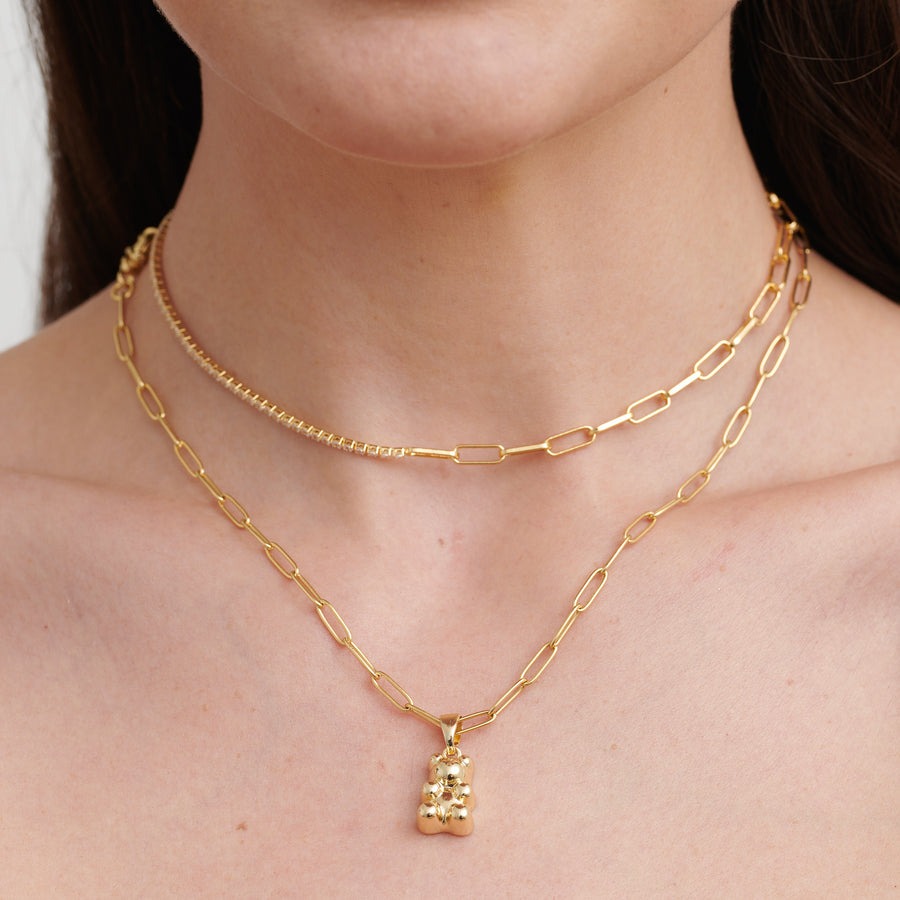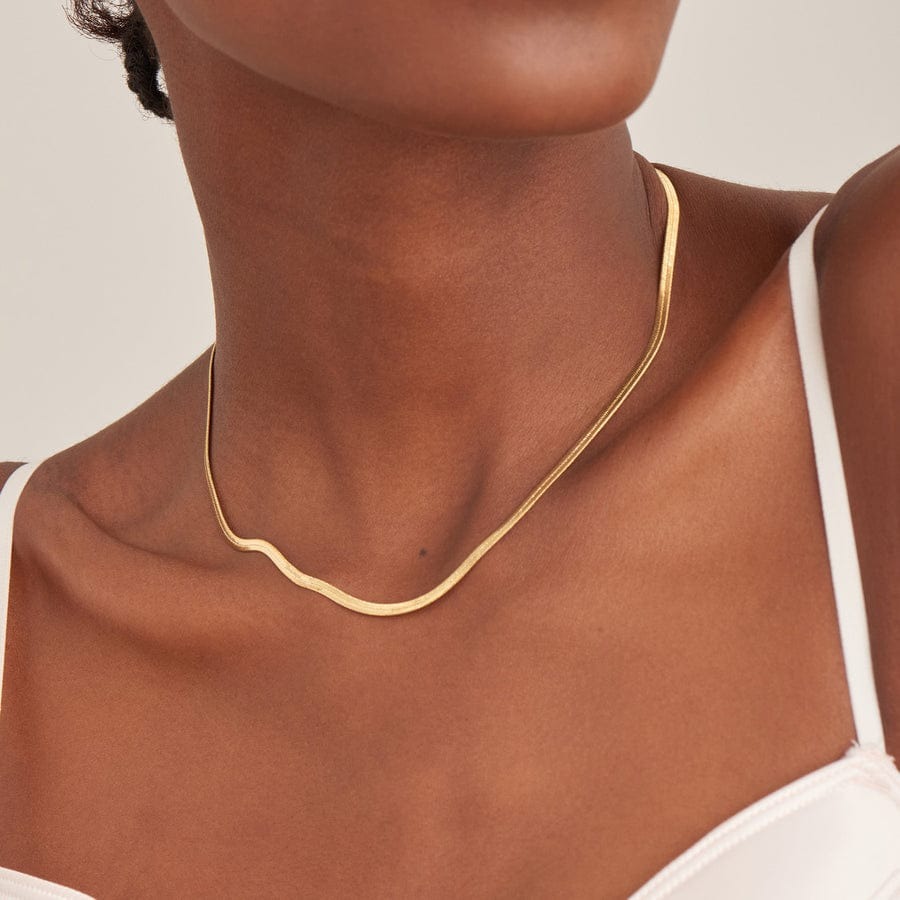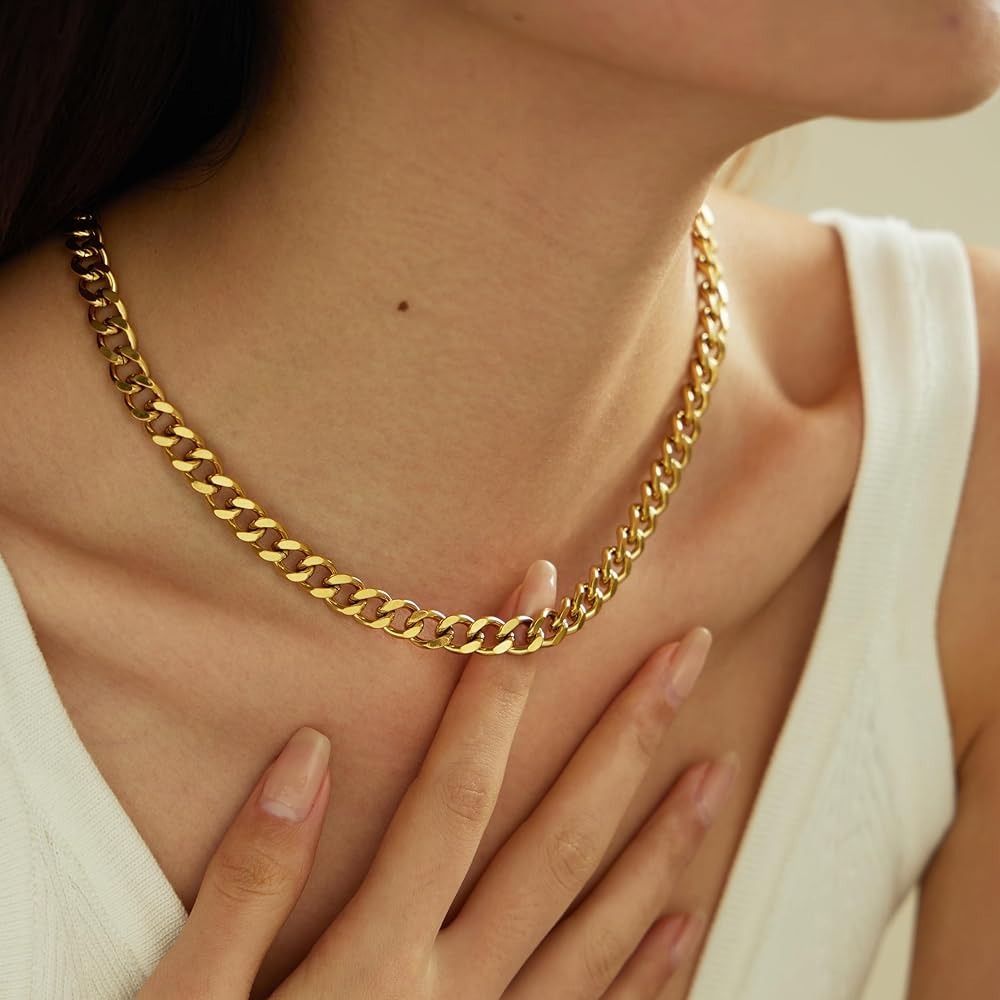Introduction to Gold Jewelry Authenticity
Gold jewelry has been a symbol of wealth and beauty for centuries. However, with the rise of counterfeit products, it has become increasingly important to distinguish between genuine gold and imitations. In this comprehensive guide, we delve into the crucial steps for determining the authenticity of a gold necklace. Our exploration includes visual inspection techniques, hallmark verification, and the physical tests that anyone can perform at home. By understanding these steps, you can know how to tell if gold necklace is real.
Understanding Gold Jewelry Stamps and Markings

Identifying whether a gold necklace is real starts with understanding jewelry stamps and markings. These engravings indicate a piece’s metal content, which is key in assessing its authenticity.
Common Stamps and What They Mean
Various stamps on a gold necklace reveal its quality. Here are common ones you should know:
- 24K stands for 24-karat gold, indicating pure gold.
- 18K represents 18 parts gold mixed with six parts of other metals.
- 14K suggests the piece contains 14 parts gold and ten parts alloy.
- 10K indicates the lowest purity in gold jewelry, with just 10 parts gold.
- Stamps like GP (gold plated) or GF (gold filled) denote a base metal with a gold overlay and are not solid gold.
Look for these stamps typically on the clasp of necklaces or the inside of rings. When inspecting your necklace, use a magnifying glass to check for these markings. No visible stamp does not always mean the necklace isn’t real, as antique jewelry may lack these engravings. In such cases, further testing might be necessary.
Visual Inspection Tips
Visual inspection is a primary step to verify if a gold necklace is genuine. Carefully observing your gold jewelry can provide valuable insights.
Weight and Color Analysis
Expected qualities of real gold include a substantial weight and a unique color saturation. Real gold has a distinct, rich yellow hue and feels heavier than fake metals. When examining your necklace, it should feel dense and substantial. Counterfeit pieces often feel lighter and look too bright or too dull.
Inspecting for a Quality Stamp or Hallmark
A quality stamp or hallmark is a reliable cue of authenticity. Check for tiny inscriptions on your necklace, usually found on its clasp or tag. Real gold necklaces often bear markings such as ‘K’ for karats, alongside numbers indicating purity (such as 10K, 14K, or 18K). If a piece is gold-plated, it might have ‘GP’ marked on it. Remember: absence of a stamp doesn’t necessarily mean the necklace is fake, especially if it’s an old piece. However, a documented stamp is usually a good sign of true gold.
How to Perform the Magnet Test
Identifying real gold can be easy with a simple magnet test. Here’s how to do it:
- Find a strong magnet, such as a refrigerator or a neodymium magnet.
- Hold the magnet close to your gold necklace.
- Observe if the necklace is attracted to the magnet.
- If the necklace sticks to the magnet, it may contain other metals.
- A lack of magnetic attraction usually indicates real gold.
This test is quick and effective, but it’s not conclusive. For accurate results, consider performing other tests as well.
Why Some Gold Can Still Appear Magnetic
Sometimes, a gold item may react to a magnet because:
- It’s mixed with magnetic metals in an alloy.
- The clasp or other parts are made of magnetic materials.
- There’s a high amount of nickel in white gold.
Even if an item appears magnetic, it could still be real gold. For such cases, further testing is recommended to confirm its authenticity.
Testing Gold with the Float Test
Verifying the authenticity of your gold necklace may include the float test. This straightforward assessment is based on gold’s density.
What the Results Indicate
Real gold, being dense, should sink quickly in water. If your necklace floats or suspends midway, it might not be genuine gold. Remember, this is not the ultimate test but can guide you for further checks.
The Ceramic Scratch Test for Gold Authenticity

Preparing for the Test
To perform the ceramic scratch test, find an unglazed ceramic plate. Clean the gold necklace and the ceramic. Hold the necklace firmly and scratch it lightly against the ceramic. Be gentle to avoid damaging the piece.
Interpreting the Results
After scratching, observe the streak left on the ceramic. A genuine gold necklace will leave a gold mark. If you see a black streak, the gold might be fake. Remember, this test may not be conclusive, so consider other tests too.
Using Acid to Verify Gold Purity
Testing your gold necklace with acid is a more advanced method to confirm its realness. It is vital to be careful when using this approach to avoid damage to your jewelry or harm to yourself.
Precautions and Methodology
Before starting the acid test, follow these safety steps:
- Wear protective gloves and eyewear.
- Use a well-ventilated area to avoid inhaling fumes.
- Put a drop of acid on just a small part of your necklace.
Here is a step-by-step way to do the acid test:
- Place your gold necklace on a test stone.
- Scratch the surface slightly to get a sample.
- Apply a small drop of acid onto the scratch.
- Observe the reaction. If the scratch dissolves and the color changes, the gold could be fake.
- If there is no reaction, your necklace is likely real gold.
Remember to buy acid kits from reputable sellers. After testing, clean your gold necklace with water to remove any acid. Using acid is risky; for the safest results, consider professional testing.
Non-Destructive Professional Testing Options

When it comes to authenticating your gold necklace, some tests require professional assistance. Jewelers use advanced, non-destructive methods to determine gold purity. These tests include electronic gold testers, X-ray fluorescence (XRF) analyzers, and ultrasound devices.
Professionals have the expertise to handle such equipment. They provide accurate analysis without harming your jewelry. Investing in professional testing ensures peace of mind about your necklace’s authenticity.
Benefits of Professional Verification
Seeking professional verification offers several advantages:
- Accuracy: Experts use high-precision tools for detecting fake gold. They provide reliable results.
- Safety: Professional methods won’t risk damaging your valuable necklace.
- Documentation: Jewelers often give a certificate or report. This document can be important for insurance or resale.
- Convenience: You won’t need to conduct tests yourself. Experts handle it all for you.
In conclusion, while home tests can be helpful, professional verification is the gold standard. It guarantees that your gold necklace is real. Choose a trusted jeweler to ensure your gold’s authenticity.
Conclusion: Ensuring Your Gold Necklace’s Authenticity
By employing these methods, from visual inspection to professional appraisals, you can confidently determine how to tell if a gold necklace is real. This guide provides a valuable resource for safeguarding both your financial investments and your sentimental treasures.
In conclusion, verifying the authenticity of your gold necklace involves a few careful steps. To ensure you have real gold, consider the tests discussed. Look for stamps and markings, weigh and inspect the color, and perform magnet and float tests. The ceramic scratch test can also provide clues. For a sure answer, seek professional testing. This could include electronic evaluations or X-ray analyses, which confirm purity without damage. Remember, your peace of mind is worth this extra step. Trust in professionals for an accurate and safe verification of your gold necklace.

